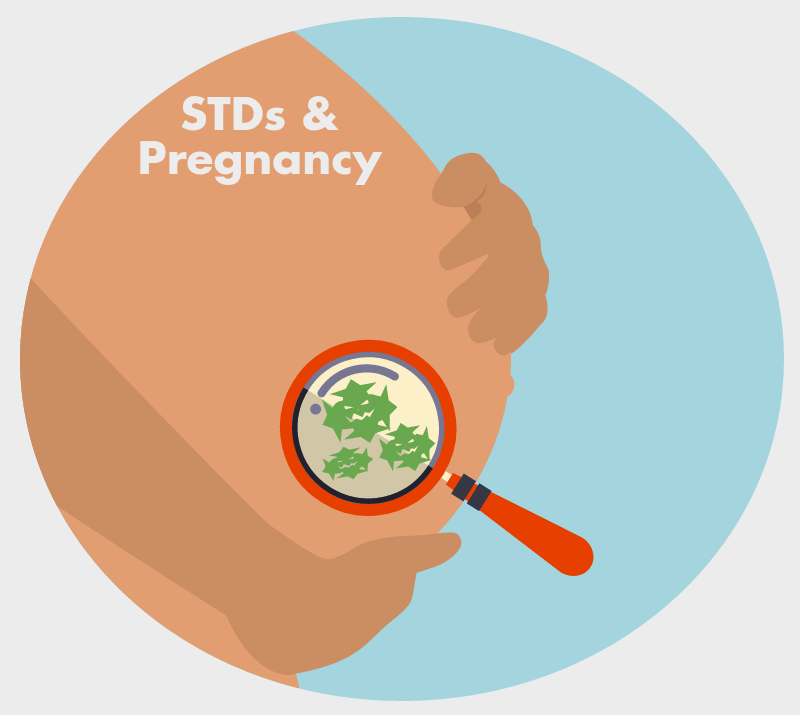STDs or sexually transmitted diseases are one of the most common infectious diseases and are bacterial, viral, fungal, or parasitic in nature. It is transferred between partners through oral, anal or vaginal sexual contact hence you can get infected even while you are pregnant. Because STDs are sexually transmitted, the risk is higher for individuals with multiple partners and whose partners have had multiple sexual contacts with other partners. If you are pregnant, consider consulting with your doctor about getting tested for STDs including HIV because not all doctors routinely run these tests for you. Some healthcare providers test you for STDs during the first prenatal appointment however if you have sex with an infected partner or suspect that you might be at risk of infection, inform your doctor right away so you can get screened and treated immediately.
There are more than 20 STDs including HIV/AIDS, crabs, herpes, syphilis, Human papillomavirus or HPV, hepatitis, warts, yeast, scabies, Chlamydia, and gonorrhea among others. These diseases impact women and men differently. For example, with Chlamydia only 25% of women and 50% of men get the symptoms of the disease whereas with gonorrhea only about 20% of women get symptoms while most men do. Generally, STDs also referred to STI or sexually transmitted infections affect both men and women including those who are pregnant. Females usually bear the long-term consequences of STDs as is the case of infertility caused by some diseases when left untreated. HIV infected women risk passing on the infection to their unborn child while a woman with untreated gonorrhea have a higher risk of a preterm delivery or even a miscarriage. Also, up to 40% of pregnant women with untreated syphilis results in infant death hence it is crucial that women know about the possible symptoms of STDs for early diagnosis and treatment.
Common symptoms of STDs in women:
- Milky white, yellow, green, or blood-tinged discharge from the vagina
- Rashes and/or blisters in the vagina and genital area (or the area covered by underwear)
- Bumps or other forms of irritation in the vagina including the genital area
- Vaginal itching
- Burning or painful urination
- Pain during intercourse
Other less common symptoms include:
- Pelvic and/or lower back pain
- Abdominal pain
- Bleeding or spotting between menstrual periods
- Painless ulcers (or sores) on, around, or near the vagina
- Sore throat or difficulty swallowing (after having oral sex)
- Bleeding, pain, or discharge in the rectum (after anal sex)
- Fever
- Nausea
- Changes in urination
- Headaches and enlarged lymph nodes (in the case of HIV/AIDS)
There are women who do not experience symptoms at all. The good news is that most of these diseases can be treated and cured with antibiotics and antiviral drugs but while most bacterial infections can be treated with antibiotics, viral diseases like HIV/AIDS and herpes cannot be cured and can only be managed to a certain degree.
The most effective way to prevent contracting STDs is by trying to maintain a monogamous sexual relationship with an uninfected partner. Consistent and proper use of condoms reduces the risk of getting STDs, but that does not mean you will never get any infection. Prevention and early detection are vital in maintaining optimum health, especially during pregnancy. Getting early treatment for STDs is vital to both you and your baby’s health.

